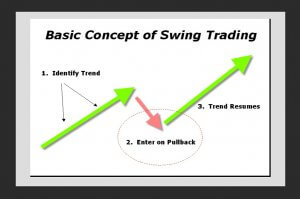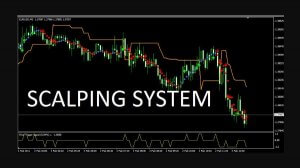According to one theory and testing results done by professional traders, the daily chart is the best time frame to trade forex. We intend to try to make as much money as we can for the shortest period of time. Some like to trade not more than 20 minutes a day because they believe in prosperity and freedom. We are choosing to have a well-balanced life and trading carrier alongside other segments of life. You should not strive to be like other people, don’t believe in progress that is supported by any kind of chemical stimulants or long over-caffeinating marathon trade sessions. A group of traders’ long experience and testing out different time frames has concluded that everything works better and much more accurate on the daily time frame. The news events matter a lot less to us and the daily frame allows us to have a bigger perspective of the market. We are choosing not to be slaves to the market. Most importantly, trading forex like this we’re simply making the highest returns possible.
How valuable is our own time? According to the daily timeframe method, we trade the daily chart at 1:40 PM Pacific standard time which is 20 minutes before the close of the daily candle. Making trades at this time is surely not feasible for everyone. For most people in the US who have access to a computer and don’t have jobs that run over this time could be easy to do trades. It is easy typically for people in Europe because it’s right about when people usually go to bed. In places like Australia and Japan, it’s pretty bright and early in the morning so it could be a certain routine to do. In India, people would be sleeping at this time far more often. For those people, it might be very difficult to trade at that time. Depends on the part of the globe, it could be irritating if somebody already has a promising system that works but he can’t endure trading because he can’t really find the best time frame for him. We shouldn’t despair.
We all have the option to approach however we want. There is just going to be times when somebody cannot trade at this 1:40 PM Pacific time. What some of you could try is to be as closest as you can to this Pacific time. The goal should be to gather as much as we possibly can data on that daily candle if we want to reach our indicators properly. After 1:40 PM Pacific, we should have enough data to do trades because we will have almost completed the daily candle to work with. We strongly advise aiming for this strategy. Just to remember that the hour that follows the close of the daily candle is a terrible hour to trade because spreads shoot way up, so we should avoid that hour. But as soon as the Asian session opens right around 3 PM Pacific time the spreads typically go back down to normal. We don’t want to pay attention to that little tinny candle that is just starting and if we are reading our indicators we need to go back to the previous candle. We want to see a candle closed because that’s the way to collect all the data we need. What should we do is read all of our indicators one candle back.
Going further, there is going to be times whereby the time we get a chance to start our trading that price is going to have gotten better or worse than it was back when that daily candle had closed. For example, if we are aiming a long set up in GBP/USD and the candle has closed. It’s two hours later and we’re getting ready to make trades. If the price has gone any down, that is good for us. We could be into the discount and we might get in that trade with confidence. This part is easy. However, let’s say that the GBP/USD since the close of the daily candle has gone 20 pips to the long side. Now we’ll be getting it at 20 pips worse than we would off if we were able to trade a couple of hours earlier when that candle was closing. Here we might be stuck with a bad and a good decision.
Back when the daily candle had closed and triggered all of our indicators and say: ‘OK, we need to go long’. That was our system telling us that we have the ideal price for us to be going long. It is there to tell us the best possible moment to go long or short on any given currency pair. If our system is telling us to go long and the price has already gone 20 pips, we are practically no longer getting the best of it. Best of it was 20 pips ago. The value we once had, has now gone. And so just simply moving straight away and taking one of these trades anyway we might call the fear of missing the trade. Here is important to develop a discipline of not take trades like that anymore. We have one more example, let’s say that the ATR of GBP/USD is 80 pips and is also our take profit point if we would have taken that trade right where the candle was closed, our profit would be 80 pips away. But now technically it is 100 pips away. The price might get to the 80 but it might not get to the 100.
So what happened? We turned a winning trade into a possible non-winning trade. In the end, math could not be in our favor so we might lose more than we win. Turning winning trades into non-winning trades can be a big disadvantage that we need to learn to avoid. But if we understand the concept of a long game and if we are disciplined, we might understand the value we are losing every time we act adventurous. One more approach that we might consider should be to use market orders, it means when we like some price where it stands we are going to tell our market broker to put us in. We recommend market orders as an option to trade if you are not into price levels methods, you have nothing to wait for, just pull the trigger and wait for tomorrow. One more thing that we shouldn’t forget is to set our limit order back to where the price was when that candle closed, in the hopes that price will come back to that level and trigger the order and get us in at the price we were supposed to get in the first place.
If we trade this way we could potentially get all our value back. If the price does not hit our limit order by the same time the next day we should get rid of it or we can set it to cancel by itself on some platforms using the GTD order. This might be a little advanced way around for some people but it’s worth trying. What we want to develop here is the discipline of not taking some trades that are 20,30 or more pips worse than it should have been. We need to build our systems thoroughly and we need to let them work for us. According to professional traders, other people who are in the position to trade 5 or 6 hours before 1:40 Pacific time just don’t have enough data to work with and make decisions. Because of this you guys should make an effort and try to trade in a more friendly time frame. Whichever route you chose to take we wish you all the best. Good things are bound to happen.





